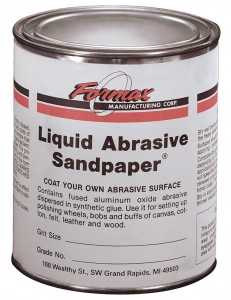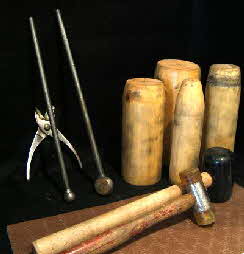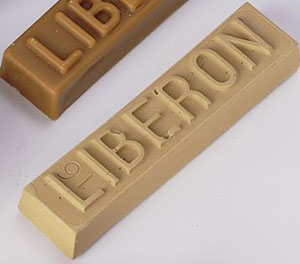Renovations of furniture and paintwork.
 Liquid sandpaper is a chemical solution that removes the thin top layers of the surface of a glossy painted item. It roughens the glossy surface, making it easier to be repainted without having to be sanded down. Otherwise, the next coat of paint may not stick to the surface. Liquid sandpaper can be found in hardware, home improvement or paint stores.
Liquid sandpaper is a chemical solution that removes the thin top layers of the surface of a glossy painted item. It roughens the glossy surface, making it easier to be repainted without having to be sanded down. Otherwise, the next coat of paint may not stick to the surface. Liquid sandpaper can be found in hardware, home improvement or paint stores.
The truth is that liquid sandpaper does not actually do any real sanding. It only removes gloss from a painted surface. If the surface has bumps or imperfections that need to be smoothed, liquid sandpaper won’t do that. It doesn’t work as paint prep for shiny metal or tile, either. It can also be found under the names “deglosser,” “liquid deglosser,” and “wet sanding.”
The main benefit of using deglosser is that it is quicker than traditional sanding. Sanding by hand often takes a lot of time and physical strength. This is especially true if the particular surface has ornate designs or extensive detailing. Sanding can also be quite messy because it leaves dust behind that requires extra cleanup. Older paint products may even contain lead, releasing potential toxic dust if sanded the traditional way.
The first step in using liquid sandpaper is cleaning the painted surface thoroughly with a mild soap and some water. The surface can then either be wiped dry with a clean lint free cloth or left out to air dry. A lint free cloth is necessary to avoid leaving pieces of dirt, grit or cloth on the item being restored or repainted.
Once all the moisture is completely gone, another lint-free cloth can be used to rub in the liquid. It should then be allowed to sit for the time specified in the directions on the package. The final step is to dry the surface with another clean cloth. Some brands do require the surface to be rinsed instead. People should always follow the directions on the package.
Liquid sandpaper does contain strong flammable solvents, like naphtha and toluene. It should be kept away from anything that might ignite it. Due to the combustible nature of this chemical compound, any cloths or rags used with it should be completely dried and disposed of properly.
There are also very strong fumes from some of these chemicals. Wet sanding techniques should only be used in well-ventilated areas to avoid possible injury. When that isn’t possible, then wearing a respirator and eye protection that has been approved by the Occupational Safety and Health Administration (OSHA) is recommended.




















